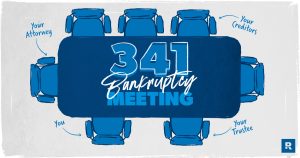Key takeaways
- Determine how much you need before you apply to avoid requesting more money after you’re approved or borrowing more than you need.
- Learn the approval requirements and prequalify (if offered by the lender) before applying to minimize your potential credit damage.
- Compare options from multiple personal loan lenders before applying to make sure you’re getting a competitive interest rate and fee structure.
In most cases, you just need a good credit score and proof of income to get a personal loan. Although getting a personal loan is relatively simple, there are some steps you can take to choose the right personal loan and increase your approval chances. The steps may vary depending on whether you’re looking for debt consolidation loans, home improvement loans, medical loans or wedding loans.
How to get approved for a loan in 9 steps
Consumers often choose personal loans because they provide fast access to cash for a variety of needs. Whether you need money to pay for an unexpected hospital bill, an emergency car repair or to finance some much-needed home renovations, knowing how to get approved for a personal loan will help make the application process as smooth as possible.
1. Know your credit scores
Check your credit score before you start crunching any numbers. Personal loan annual percentage rates (APRs) can range from just below 8 percent all the way up to 35.99 percent, depending mostly on your credit score. A score of 800 or higher puts in the excellent-credit personal loan rate category, while a score of 580 or below is typically categorized as bad.
It’s more difficult to get approved for a loan with bad credit. Higher APRs mean higher payments. Lenders may not be willing to lend you as much, or they may require you to pay the loan off faster.
On the other hand, a high credit score gives you the best chance at a low personal loan rate and a larger loan amount. You’re also more likely to be eligible for repayment terms as long as seven years, versus the standard five-year term offered to lower credit score borrowers.
Tip: You may be able to check one or more of your credit scores for free with one of your credit issuers.
Next steps:
- Pay your bills on time: Your payment history has the most impact on your credit score.
- Keep your credit card balances low: Pay off or pay down credit cards if you can. Your credit utilization ratio measures how much available revolving credit you’re carrying. The more maxed-out your cards are, the lower your score will be.
- Avoid opening new accounts: Your score dips a bit every time you apply for new credit. Limit new credit applications if you can.
2. Run the numbers
Before taking out a loan, decide exactly how much you need to borrow. This will have an impact on the interest rate you’re offered, your monthly payment and the total amount of origination fees the lender charges.
Once you’ve zeroed in on your loan amount, run some numbers using a personal loan calculator. Experiment with longer terms if you want to keep your payment lower or shorter terms if you want to pay the balance off quickly.
Tip: Include fees in your loan amount calculations. Personal loan lenders may charge origination fees up to 10 percent of the amount you borrow, and the cost is typically deducted from your loan funds. Padding your loan amount before you apply may help you avoid reapplying for more to cover the costs later.
Next steps: Check the websites of some personal loan lenders to get an idea of the rates and terms they offer. You should also check their rates and use them with a personal loan calculator to get the most accurate idea of what your monthly payment will be.
3. Review lender requirements and gather documentation
Once you decide on the amount you want to borrow, you need to know what it will take to get approved by a personal loan lender. Each lender may set different approval requirements and collect a variety of documents to decide whether to take a risk on you as a borrower.
Personal loan qualification requirements
Your credit score, income and debt are usually evaluated by personal loan lenders to see if you qualify. Some lenders may also consider your work history or education.
- Credit score and report: Most personal loan lenders require you to have fair credit, but there are options for those with bad credit. Lenders may also review your history for major credit issues like prior bankruptcies or judgments.
- Debt-to-income ratio: Lenders also look at other monthly credit payments you make compared to how much you earn each month. This is known as your debt-to-income ratio and if it’s too high, you may not be approved for the amount you apply for.
- Income: Your income tells lenders how likely you are to be able to repay your loan. The more you make and the more regular your income is, the easier it is for the lender to approve your loan. Some, but not all, lenders allow you to get a co-signer, which may help boost the amount you’re approved for.
- Collateral: Although most personal loans are unsecured, some lenders may offer secured options. Collateral is another word for an asset like a car, jewelry or a fine art collection. Rates may be slightly lower with a secured loan, but the downside is you’ll lose your asset if you default on the loan.
Tip: A stable income, high credit score and low DTI ratio increase the odds you’ll be approved for a personal loan. However, some personal loan lenders will consider other criteria, such as your educational background or employment history, when reviewing your application.
Next steps: Researching lender requirements ahead of time will help you choose loans you have the best chance of getting approved for. However,
Documents to gather for a personal loan application
You’ll need to provide documentation as part of the personal loan approval process to verify the information you provided on your application. Some lenders may be able to verify this information electronically, but most will ask you to provide:
- Proof of identity: Lenders typically accept your birth certificate, certificate of citizenship, driver’s license, passport, Social Security card or a state-issued ID.
- Income verification: You can provide a pay stub, bank statements, tax returns or even 1099 forms if you’re self-employed.
- Proof of address: Lenders want to confirm you have a verifiable address and where you’ve lived for the past few years. They may ask for copies of utility bills, lease or rental agreements, property tax bills or credit card statements as proof of address.
Most lenders have websites with secure portals you can use to upload requested documents.
Tip: Have these documents handy ahead of time to avoid delays in the approval process. Personal loan lenders won’t be able to finalize your loan if you don’t provide the paperwork they request.
Next steps: Be prepared to take pictures or scan your documents and make sure the images are legible. Lenders won’t accept documents they can’t read.
4. Consider your options
A personal loan can be a powerful financial planning tool or a way to get cash quickly if you need it to cover an unexpected expense. Before you start researching personal loan types, think about how you can use the funds to improve your financial situation.
Fast funding vs. future planning
One major benefit of personal loans is they can be funded quickly — sometimes as soon as one business day. If you’re facing a large unexpected expense like a car repair or an air conditioner replacement in your home, personal loans can get you needed funds fast.
On the other hand, maybe you’re planning to buy a house in the future and want to simplify your expenses and improve your credit score. You could use a personal loan for debt consolidation to replace variable-rate credit cards with a fixed rate and payment. The future perk is your credit score could improve, allowing you to get a lower mortgage rate when you find your new home.
Short term vs. long term
Most personal loan terms range between one and seven years. A longer term will result in a lower monthly payment. However, lenders typically charge higher rates for longer terms, which leaves you paying more interest in the long run.
Personal loan lenders typically charge lower rates for shorter terms, but the payments are much higher. Make sure your budget can handle the higher payment, and avoid short terms if you earn income from commissions or self-employment.
Debt consolidation considerations
One of the best ways to improve your credit score is to pay off revolving debt like credit cards. If you don’t have the cash to pay them off, a personal loan is a great alternative to convert multiple credit card debts into one installment loan.
Lump sum vs. line of credit
Funds from a personal loan are received all at once, and your monthly payment is the same for the term of the loan. That may be a shock if you’re used to making minimum payments on a credit card.
Also, if you don’t need the funds right away, a personal loan might not be the best fit because it locks you into a monthly payment whether you need the funds now or not. For example, if you’re planning some home improvement projects but plan to spread them out over the next year or two, a home equity line of credit (HELOC) allows you to use as much as you need for each project and the payment is only based on the credit balance you access.
Bad credit now vs. better credit later
If your credit score is low because you have a lot of maxed-out credit cards, a personal loan for bad credit could help you pay those debts off and reduce your credit utilization ratio. Your scores could improve to the point where you can refinance to a better rate later, which will help reduce your overall monthly payments.
Tip: Weigh your options ahead of time so you can choose the best personal loan type for your funding needs.
Next steps: Double-check your budget to make sure you can afford a fixed payment, and avoid short-term loans if your income varies.
5. Choose your loan type
Personal loan lenders offer a variety of loan types to meet a variety of different needs. While some lenders are flexible in how you use the funds, others may only allow the money to be used for specific purposes. Before applying, check to make sure you can use the funds for what you need.
Likewise, depending on the type of loan you get, you may get different terms and interest rates. For instance, home improvement loans tend to come with longer repayment terms than emergency loans, and debt consolidation loans tend to have lower starting APRs than general purpose loans.
Different types of personal loans
To make the most informed decision on what’s best for your finances, consider every type of personal loan available.
- Debt consolidation loans:Debt consolidation is one of the most common uses for personal loans. You take out one loan to cover multiple variable rate debts like credit cards and make only one payment at a potentially lower interest rate.
- Credit card refinancing loans: Some companies specialize in loans for people looking to pay off credit card debt. Because personal loan rates are often lower than credit card rates, this type of loan may save you hundreds or even thousands in interest charges over the life of the loan.
- Home improvement loans: A home improvement loan may be a good option to pay for a large renovation project without taking out a secured home equity loan.
- Medical loans: If you’re in a financial bind due to large medical expenses, a personal loan may be a good way to pay medical bills off and spread the payments out over a number of years.
- Emergency loans:Emergency loans are useful for urgent expenses such as a car breakdown, a smaller medical expense or a burst water pipe.
- Event loans: Although not recommended as a first-resort option, personal loans can be used as an alternative to using credit cards to finance weddings and vacations.
Tip: Sift through all of your loan options to find a lender that offers a loan that best meets your needs.
Next steps: Search the Bankrate personal loan marketplace to find the most competitive loan that best meets your borrowing needs.
6. Shop around for the best personal loan rates
Shop around and only apply with the lenders that clearly list personal and financial approval requirements that meet your needs. Compare several lenders and loan types to get an idea of what you qualify for. Avoid settling for the first offer you receive.
If you’ve been a longtime account holder with your bank or credit union, see if it’s willing to give you a better rate or offer you any perks or discounts.
Check for prequalification options ahead of time
Most financial institutions also allow you to check your predicted interest rates and eligibility odds before officially applying. Known as prequalification, this tool is often offered as the first step of the application process and doesn’t impact your credit score.
However, not all lenders offer prequalification. If you can’t prequalify and the minimum eligibility criteria aren’t listed on the website, you may want to try to contact the lender directly to get the information before applying.
Avoid hard inquiries
During the application process, most lenders will run a hard credit inquiry, which temporarily knocks your score down a few points. You can prevent severe credit damage by only applying for lenders you qualify for, especially if prequalification isn’t offered.
If you do apply for multiple lenders, keep the applications within 45 days of each other. This will ensure that multiple hard checks are counted as a single inquiry on your credit report and will reduce the negative credit impact.
Tip: Shop several lenders and loan types before applying by prequalifying to limit the overall negative impact to your credit.
Next steps: Review the rates and terms you’re offered and check the fine print for any limitations on how you can use the money. Watch for prepayment penalties and fees to pick the best option for you.
7. Pick a lender and apply
Once you’ve picked the lender with the best offer for your needs, you’ll start the application process.
You may be able to do the entire application process online. Alternatively, you may have to apply in person at your local bank or credit union branch. You’ll typically need to provide basic personal information and your income and employment information.
Most lenders require that you state your intended loan purpose during the application process as well. Keep in mind the terms of your offer could change depending on the documents you provide. Ask the lender to explain any changes to your interest rate or loan amount after your initial application.
Tip: Regardless of if you are applying online or in person, you will likely need some uninterrupted time to complete the application. Try to give yourself at least a half hour to fill out the application and review the offered terms.
Next steps: You’ll have a chance to review the complete terms and conditions of the loan, including fees and your repayment period. Read the loan agreement thoroughly to avoid any surprise fees.
8. Provide necessary documentation
Every lender will have different paperwork requirements and once you submit your application, you may be asked to provide additional documentation. Be prepared to provide additional documents alongside the ones you prepared so the lender can verify information you provided on your application. Doing so can help avoid delays.
Tip: You may be asked to present additional information during the application process. Prepare by having any potentially relevant personal and financial documentation on hand.
Next steps: Watch for changes to your terms that are a direct result of the documents you provided. Ask your lender to explain any differences in your rate, loan term or loan amount if they change after your prequalification offer.
9. Accept the loan and start making payments
After the lender reviews your documents and notifies you that you’ve been approved, you’ll then finalize your loan documents by accepting the terms. Once you sign off on the loan agreement, you’ll typically get your funds within a week, although some online lenders get it to you within one or two business days.
Keep track of when your payments are due, and consider setting up automatic payments to streamline the process. Some lenders even offer interest rate discounts if you use autopay.
Also, consider paying extra each month, even if it’s only a small amount. While personal loans are often cheaper than credit cards, you’ll still save money on interest by paying the loan off early.
Tip: You could receive the funds as early as one to two business days after getting approved and accepting the loan terms.
Next steps: Always make your monthly payments on time and try to make extra payments whenever possible. To make the process easier, enroll in automatic payments or set a due date reminder on your calendar.
The bottom line
Getting approved for a personal loan is a simple process. You can increase your chances of approval by taking some steps ahead of time. Simple steps like knowing your credit score and understanding lender requirements could make the difference between a green light for financing or a loan denial. Take the time to research and compare lenders to find the best rates and terms for your specific financial situation.
Read the full article here










